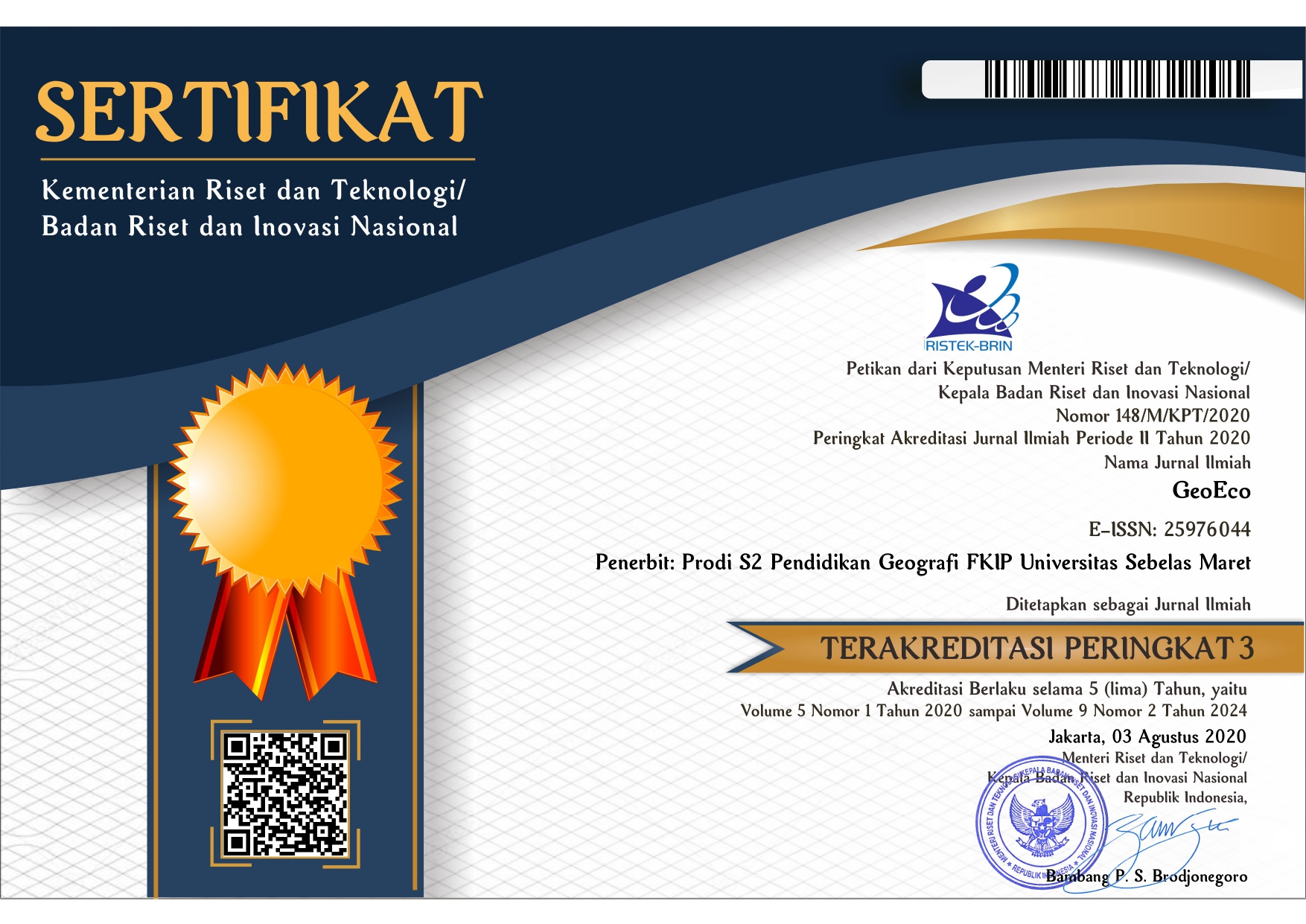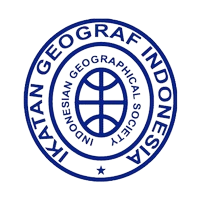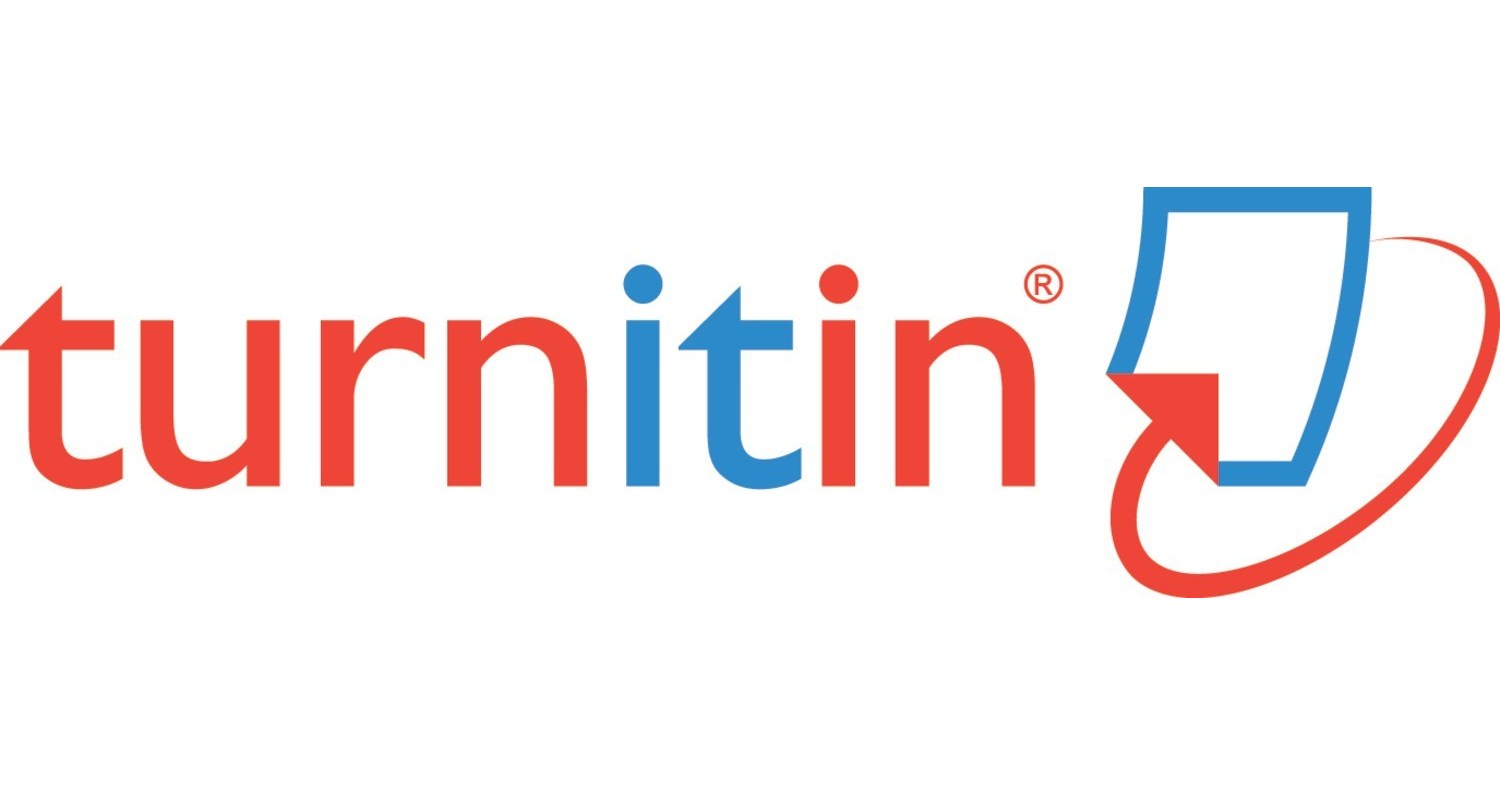THE DEVELOPMENT OF ANIMATION AND SIMULATION BASED LEARNING MEDIA IN THE COSMOGRAPHY COURSE
Abstract
Keywords
Full Text:
PDFReferences
Ahmad, N. J., Yakob, N., Bunyamin, M. A. H., Winarno, N., & Akmal, W. H. (2021). The Effect Of Interactive Computer Animation And Simulation On Students ’ Achievement And Motivation In Learning Electrochemistry. Jurnal Pendidikan IPA Indonesia, 10(3), 311–324. https://doi.org/10.15294/jpii.v10i3.26013
Amirullah, G., & Hardinata, R. (2017). Pengembangan Mobile Learning Bagi Pembelajaran. JKKP (Jurnal Kesejahteraan Keluarga Dan Pendidikan), 4(02), 97–101. https://doi.org/10.21009/jkkp.042.07
Arianti, S. (2020). Pembelajaran Model E-Learning Menggunakan Aplikasi Edmodo Pada Mata Kuliah Kosmografi Mahasiswa Semester Iv Program Studi Pendidikan Geografi. Jurnal MERETAS, 7.
Atabhotor, I. S., & Kofoworola, O. M. (2020). Science Teaching and Learning Using Animation and Simulation Strategies in Nigerian. IRE Journals, 4(2), 73–82.
Azwar, S. (2014). Metode Penelitian. Pustaka Pelajar.
Belvedere, V., Grando, A., & Bielli, P. (2013). A quantitative investigation of the role of Information and Communication Technologies in the implementation of a product-service system. International Journal of Production Research, 51(2), 410–426. https://doi.org/10.1080/00207543.2011.648278
Bousmah, M., Jadida, E., & Kamoun, N. El. (2015). MORAVIG : An Android Agent for the Project Mobile e- Learning Session. International Journal of Computer Applications, 113(15), 12–19.
Enterprise, J. (2018). HTML, PHP, dan MySQL untuk Pemula. PT Elex Media Komputindo.
Eryanto, D. R. D., & Prestiliano, J. (2017). Design of learning media for the solar system lesson using animation and virtual reality. Open Science Journal, January, 1–13.
Fang, N., & Guo, Y. (2016). A Quasi-Experimental Study of the Effect of Computer Simulation and Animation ( CSA ) on Student Learning in Kinematics in a Foundational Undergraduate Engineering Course. Conference Proceedings of the 20th Global Chinese Conference on Computers in Education 2016. Hong Kong: The Hong Kong Institute of Education., 417–420.
Fredyanan, C. (2016). Pengembangan Media Pembelajaran Berbasis Android Pada Mata Pelajaran Teknologi Dasar Otomotif Untuk Kelas X Smk Negeri 3 Buduran - Sidoarjo. Jurnal Pendidikan Teknik Mesin UNESA, 5(02), 250480.
Hamdani, H., Yanto, D. T. P., & Maulana, R. (2019). Validitas Modul Tutorial Gambar Teknik dan Listrik dengan Autocad. INVOTEK: Jurnal Inovasi Vokasional Dan Teknologi, 19(2), 83–92. https://doi.org/10.24036/invotek.v19i2.491
Hapsari, T. P. R. N., & Wulandari, A. (2020). Analisis Kelayakan Buku Ajar Milenial Berbasis Augmented Reality (AR) sebagai Media Pembelajaran Teks Prosedur di Magelang. Diglosia: Jurnal Kajian Bahasa, Sastra, Dan Pengajarannya, 3(4), 351–364. https://doi.org/10.30872/diglosia.v3i4.125
Johan, J. R., Iriani, T., Maulana, A., & Negeri, U. (2023). Penerapan Model Four-D dalam Pengembangan Media Video Keterampilan Mengajar Kelompok Kecil dan Perorangan. Jurnal Pendidikan West Science, 01(06), 372–378.
Khomarudin, A. N., & Efriyanti, L. (2018). Pengembangan Media Pembelajaran Mobile Learning Berbasis Android Pada Mata Kuliah Kecerdasan Buatan. Journal Educative : Journal of Educational Studies, 3(1), 72. https://doi.org/10.30983/educative.v3i1.543
Kumar, A., Khader, A., Saudagar, J., Alkhathami, M., Alsamani, B., Khan, M. B., Hoque, M., Hasanat, A., Ahmed, Z. H., & Kumar, A. (2023). Gamified Learning and Assessment Using ARCS with Next-Generation AIoMT Integrated 3D Animation and Virtual Reality Simulation. Electronics Journal, 12, 1–16. https://doi.org/https://doi.org/10.3390/electronics12040835
Prasetyo, B., & Trisyanti, D. (2019). Revolusi Industri 4.0 dan Tantangan Perubahan Sosial. In Prosiding SEMATEKSOS 3 “Strategi Pembangunan Nasional MenghadapiRevolusiIndustri 4.0” REVOLUSI INDUSTRI 4.0 (pp. 22–27).
Prihadi, A., Sarwono, & Santoso, S. (2017). Pengaruh Pembelajaran Berbasis Komputer Model Simulasi Terhadap Hasil Belajar Ditinjau Dari Motivasi Siswa Pada Materi Tata Surya Dikelas X Sman 10 Pontianak Tahun Ajaran 2016 / 2017. Jurnal GeoEco, 3(2), 126–132.
Rahmad, R., Yuniastuti, E., & Wirda, M. A. (2018). Pengembangan Media Pembelajaran Video Tutorial Menggunakan Camtasia Studio 8.5 Pada Matakuliah. Jurnal Ilmiah Pendidikan Dan Pembelajaran, 2(1), 97–110.
Riduwan. (2010). Skala Pengukuran Variabel-Variabel Penelitian (Warsiman (ed.)). Alfabeta.
Rifai, M. H. (2018). Pengaruh Penggunaan Media Audio Visual Terhadap Pemahaman Konsep Mitigasi Bencana Pada Mahasiswa Pendidikan Geografi. Edudikara: Jurnal Pendidikan Dan Pembelajaran, 3(1), 62–69.
Saroinsong, D. M., Takaendengan, W., & Rantung, S. (2020). The Effectiveness Of The Participatory Learning Model , Combined With The Simulation Animation Program To Improve The Quality Of Learning Students In Education Courses Sociology. Jurnal Ilmiah Pembelajaran, 2(3), 65–71.
Tajvidi, M., & Fang, N. (2015). Application of Computer Simulation and Animation ( CSA ) in Teaching and Learning Engineering Mechanics Application of Computer Simulation and Animation ( CSA ) in Teaching and Learning Engineering Mechanics. ASEE (Annual Conference and Exposition, 26.221.1-26.221.15.
Thiagarajan, S. A. O. (1974). Instructional Development for Training Teachers of Exceptional Children: A Sourcebook. Minneapolis, Minnesota: Leadership Training Institute/Special Education, University of Minnesota.
Tian, X., & Martin, B. (2011). Impacting Forces on eBook Business Models Development. Pub Res Q (Springer), 27, 230–246. https://doi.org/10.1007/s12109-011-9229-0
Väätäjä, J. O. (2023). A community of practice approach to the co- development of digital pedagogy : a case study of primary school teacher education practicum. European Journal of Teacher Education, 00(00), 1–18. https://doi.org/10.1080/02619768.2023.2198102
Wulandari, Y. (2017). Kelayakan Aspek Materi Dan Media Dalam Pengembangan Buku Ajar Sastra Lama. Gramatika STKIP PGRI Sumatera Barat, 3(2). https://doi.org/10.22202/jg.2017.v3i2.2049
Refbacks
- There are currently no refbacks.











.png)

